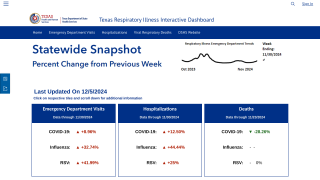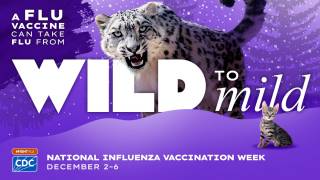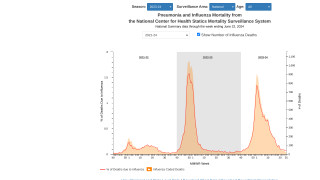3 Pediatric Deaths Reported During 2018-19 Flu Season

Influenza activity in the United States remains low for the week ending October 20, 2018, says the Centers for Disease Control and Prevention (CDC).
But, as of October 27th, there have been 3 pediatric deaths reported in the USA for the 2018-2019 influenza season.
These deaths have been reported in these states:
Previously, the CDC confirmed a total of 183 influenza-associated pediatric deaths for the 2017-2018 season.
According to the CDC, approximately 80 percent of these pediatric deaths were unvaccinated children.
Since influenza is so common, flu-related fatalities are not always listed on death certificates. To compensate for this reporting issue, the CDC uses statistical models, which are periodically revised, to make its estimates.
Below is a summary of the key influenza indicators for the week ending October 20, 2018:
- Influenza A(H1N1)pdm09, influenza A(H3N2), and influenza B viruses continue to co-circulate, with influenza A(H1N1)pdm09 viruses reported most commonly by public health laboratories during the most recent three weeks.
- Influenza A viruses have predominated in the United States since the beginning of July 2018. The percentage of respiratory specimens testing positive for influenza in clinical laboratories was low.
- The majority of influenza viruses characterized antigenically and genetically are similar to the cell-grown reference viruses representing the 2018–2019 Northern Hemisphere influenza vaccine viruses.
- All viruses tested since late May show susceptibility to the antiviral drugs oseltamivir, zanamivir, and peramivir.
- The proportion of outpatient visits for influenza-like illness (ILI) remained low at 1.5%, which is below the national baseline of 2.2%. All regions reported ILI below their region-specific baseline level.
- The geographic spread of influenza in four states was reported as local; the District of Columbia, Puerto Rico, the U.S. Virgin Islands, and 42 states reported sporadic activity; four states reported no activity, and Guam did not report.
Children, especially those who are under the age of 5 or those with a chronic health problem, have a higher risk of developing serious flu-related complications, according to the CDC.
Influenza vaccination has been shown to reduce a child’s likelihood of dying from influenza by up to 60 percent.
Since it takes about 2 weeks for antibodies to develop that protect against an influenza virus infection, it is best to get vaccinated as soon as possible. The CDC recommends everyone over 6 months of age get vaccinated by the end of October each year.
There are various flu vaccines available for the 2018-19 season. If you have questions, it's best to speak with your doctor, nurse or pharmacists.
The CDC Vaccine Price List provides the private sector prices for general information.
Flu vaccine discounts can be found here.
Vaccines, like any medicine, can have side effects. You are encouraged to report negative side effects of vaccines to the FDA or CDC.
Our Trust Standards: Medical Advisory Committee

























